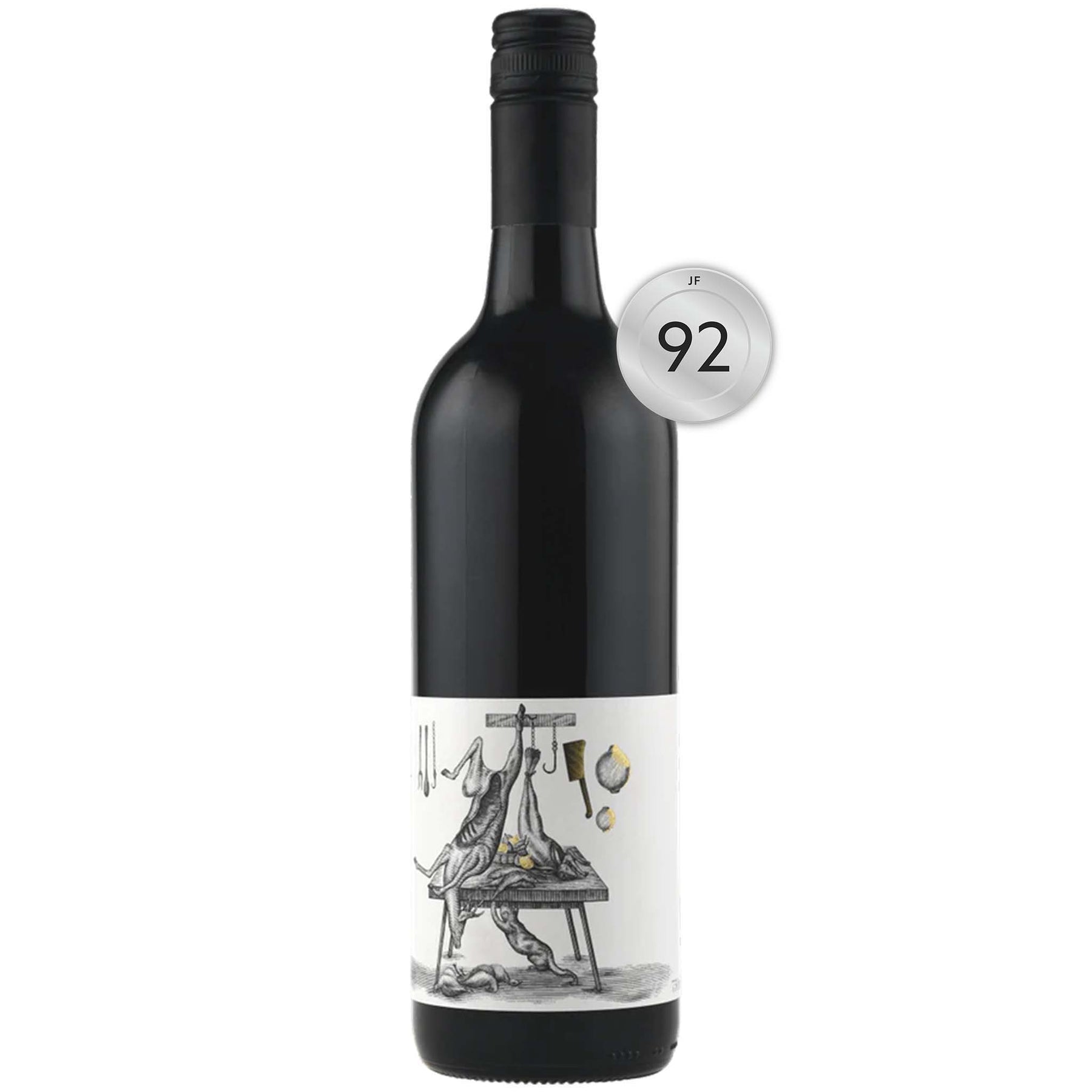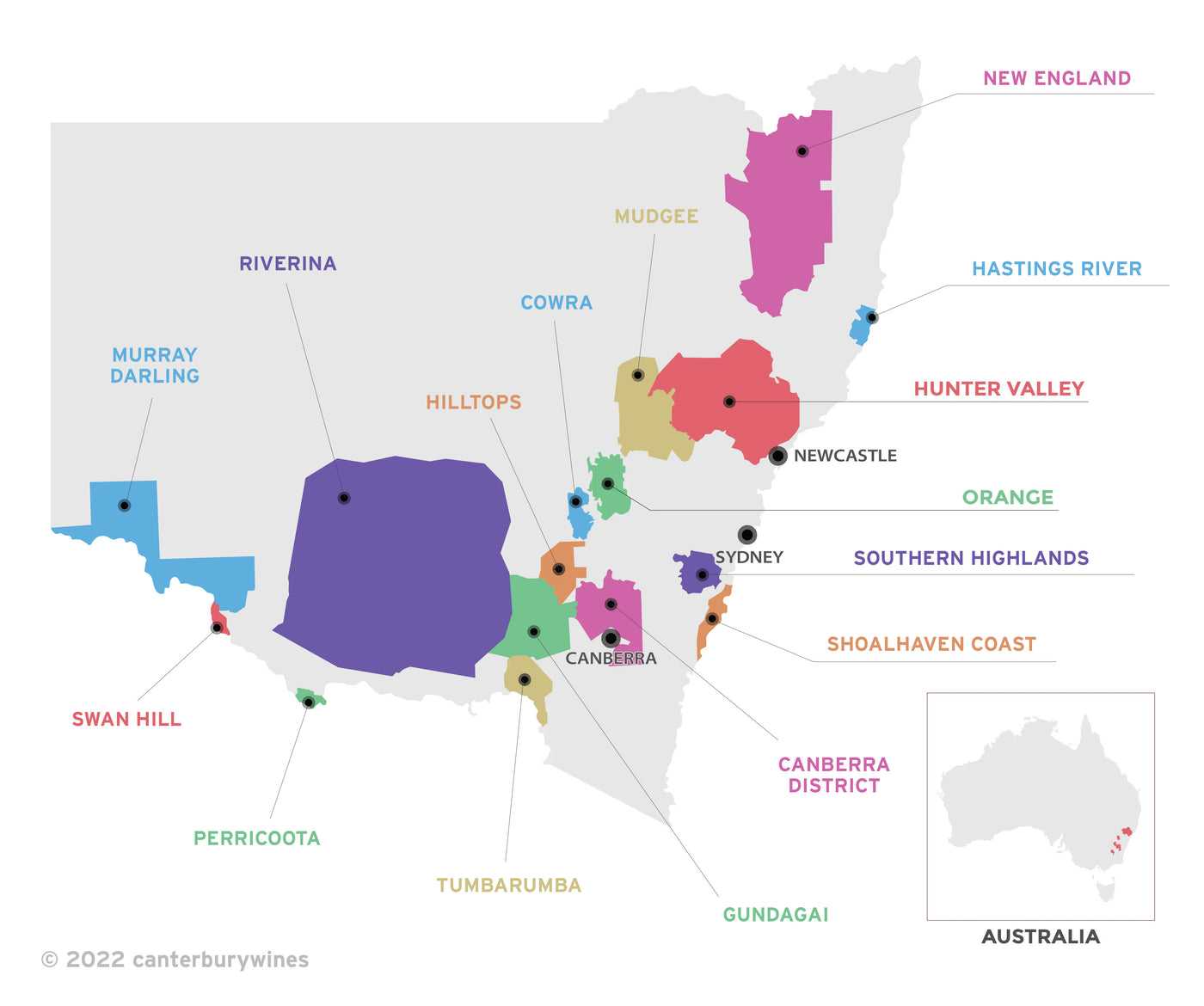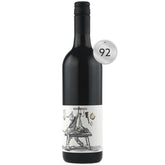

Ravensworth Regional Sangiovese 2019
Style: Red Wine
Closure: Screwcap
Ravensworth Regional Sangiovese 2019
Warehouse
34 Redland Drive
Vermont VIC 3133
Australia
Critic Score: 92
Alcohol: 13.5%
Size: 750 ml
Drink by: 2027
"Bryan Martin and sangiovese should be shouted from the rooftops." Mike Bennie
Bryan Martin established his own label Ravensworth in 2001 while working as Tim Kirk’s righthand man at the iconic Clonakilla winery. With over 15 years experience at Clonakilla, it is no wonder that his wines have achieved cult status and become a favourite of Australian wine lovers.
The Ravensworth Regional Sangiovese is unquestionably one of Australia's best value Sangiovese. The perfect bistro wine. The 2019 is the 16th vintage of this wine, the grapes sourced from six different vineyards across the Canberra District, Hilltops and Gundagai regions of New South Wales.
"I like this for its simplicity. It's honesty. It's a savoury sangio with textural, grainy umami tannins working alongside a neat balance of spice and red fruits. And the right amount of enjoyment for matching with char-grilled meats and vegetables." Jane Faulkner
"There are six different vineyards from Hall, Murrumbateman, Hilltops and Gundagai contributing this year. A beautiful medium bodied wine that carries fragrant dark cherry, floral and spice aromas with a fine textural palate. Our sixteenth vintage and just getting better and better with vine age and us getting the smarts.
It was just a brilliant year, warm to hot, small crops, perfect really. Processed as whole berries, so no pumps used, a natural ferment that wasn't messed around with too much and then left on skins for three weeks. Matured in small 5-year-old French oak cask." Ravensworth
Expert reviews
"I like this for its simplicity. It's honesty. It's a savoury sangio with textural, grainy umami tannins working alongside a neat balance of spice and red fruits. And the right amount of enjoyment for matching with char-grilled meats and vegetables. Drink by: 2025." Jane Faulkner, Halliday Wine Companion - 92 points
Bryan Martin

For over 15 years, Bryan Martin was Tim Kirk’s righthand man at the towering icon of the Canberra District that is Clonakilla. That was while establishing his own Ravensworth label, which now twinkles just as brightly in the region’s firmament of stars. Martin now devotes all his time to tending the vines and making wine from his own site, just down the road from the Kirk’s property, as well as from selected vineyards in the Canberra district. That home site has 13 varieties across 3.3 hectares, with the regional leaders – shiraz and riesling – sharing the spotlight with sangiovese, along with a brace of French and Italian whites and newer plantings of gamay and nebbiolo. Martin hasn’t used synthetic chemicals for a decade, farming with an unwavering focus on soil health and microbial life to better express the signature of site.
"Living essentially within the vineyard and raising kids has to make you want to do it without chemicals," says Martin. "An extension of our vegetable garden is the main way I see it. Once the change to a chemical-free environment… that’s no fertilisers, herbicides, systemic anything… the vineyard took a few years to come good. As the balance of diversity grew from a monoculture, the vines became stronger, more resilient, less reliant on protection."
The first Ravensworth estate vines were planted in 1998, with additions coming in 2005, ’14, ’20 and ’22. Shiraz is the most planted variety, across four clones, with riesling (three clones) the next most dominant, followed by sangiovese (also three clones). Additionally, Martin has smaller plantings of gewürztraminer, pinot gris, chardonnay, viognier, roussanne, marsanne, ribolla gialla, savagnin, gamay and nebbiolo in the ground.
Some of those new vines are yet to yield a commercial crop, but Ravensworth’s Estate range features riesling – both still and méthode ancestrale – as well as the 'Grainery' Rhône white blend, skin-fermented pinot gris-based 'Seven Months', sangiovese and, naturally, a shiraz viognier.
"This amazing soil is not even from this area," says Martin. "It comes from Queensland… deposited during the last ice age… It’s a sedimentary, windblown soil called 'parna' of mostly mineral-rich clays that have a high friability and large water-holding capacity. Murrumbateman is full of this soil. The reason why the original First Nations people were drawn into this cold area would have been the abundant growth due to the land here. Much later, settling sheep farmers would have felt the same way."
"Sometimes customers think that, particularly in our shiraz blends, that the white grape – viognier, roussanne etc. – is contributing to this heady aroma, but it’s not that… Often the wine will be straight shiraz or nebbiolo. This floral component, I believe, is due to the underlying soil structure. It’s a character that speaks of our land and the changes we have made... It’s early days, but the proof we see in the quality and beauty of our wines, which we also leave alone and don’t use any additives or adjustments, reinforces this belief."
Martin has farmed his site without chemical intervention for ten years, employing what he refers to as "natural forestry principles". In other words, he works to disrupt the monoculture that has been the guiding principle of viticulture for so long, trusting the vines’ capacity to compete and thrive, while also benefiting from the presence of other plants, as well as the fungal and microbial life of the soil that such an approach encourages.
"We don’t think vine spacing and trellis systems, variety choices, moon phases or robotics are as important as what is happening underground," says Martin. "Restoring the land, and allowing the vines own mycorrhizal system to engage, is vital to allowing the vines to meet the challenges of climate change and unsuited agricultural practices."
All prunings, grape marc and other waste wood are turned into biochar onsite, with a couple of tonnes produced each year. "Biochar is a natural material in diverse plant systems, supports microbial life and retains moisture, nutrients and carbon within its stable structure," says Martin. "We spread this throughout the vineyard and cultivate into the upper 10 cm, regularly."
Having traded in his heavy old tractor some years back, Martin uses a lightweight Italian model to minimise soil compaction, but he’s sparing in his use of that, too, primarily employing it as a tool to reverse prior damage. "Our Yeoman’s plough is key – to lift soil, reverse compaction and allow oxygen to penetrate at depth. Only then will there be viable organic life. Vines are able to compete with the diverse life but only with active mycorrhizae. In most cases, vineyards will not support this natural system due to compaction from heavy, unsuited tractors and using fertilisers."
To open up the soil naturally, Martin also plants mid-row crops that produce long taproots. "Cover crops with deep roots are being established to open soils to more organic material at depth, again to encourage vine’s natural mycorrhizae and build up organic material, which will help with low rainfall and hotter vintages… Maku lotus, chicory, clovers, lucerne, any vegetable really. Our vineyard is more a garden than a pretty golf course."
Crediting this focus on vineyard biodiversity and organic matter in the soil, Martin is seeing increased resilience in the vines. "The diversity, growth and health we see in our vineyard… is due to understanding that what is happening underground is the most important thing we can learn. Even after the extreme drought of 2019–20, our land still looked inhabitable. …The land is so soft here; you can dig holes with a tent pole. This gives the microbes the best chance of existing in harmony with the vines. The soil is alive and productive and, again, we haven’t added one drop of fertiliser in close to 15 years."
Martyn also firmly believes that the "land can communicate the geology" in the finished wines, so long as it has the chance. "Our management has been based on removing as many traits imposed by farming and agriculture," he says. "Obviously, we are still harvesting the land, but we believe that returning it to what it was – before white people like me got here – has brought out an intensity of flavour, structure and a completeness in our estate-grown wines that wouldn’t be here if we pursued chemical fertilisers and pesticides, and continued with heavy tractors and an insistence on the monoculture of grapevines."
Martin notes that the wines, across the range, show "an unmistakable floral component", and it’s one that doesn’t require a deep understanding of the wines to detect. "Sometimes customers think that, particularly in our shiraz blends, that the white grape – viognier, roussanne etc. – is contributing to this heady aroma, but it’s not that… Often the wine will be straight shiraz or nebbiolo. This floral component, I believe, is due to the underlying soil structure. It’s a character that speaks of our land and the changes we have made… It’s early days, but the proof we see in the quality and beauty of our wines, which we also leave alone and don’t use any additives or adjustments, reinforces this belief."
The above article is reproduced from: https://younggunofwine.com/vineyard/ravensworth/
About the winery
 Bryan Martin discusses his agricultural practices
Bryan Martin discusses his agricultural practices
As he tells it, Bryan Martin established Ravensworth in Murrumbateman with his partner Jocelyn and brother David in 2001 because "it seemed like a good idea at the time." This former chef, restaurant critic, food writer and winemaker at Clonakilla is known for his emotional symbiosis with the region and his exceptionally good taste. And that’s the constant to Bryan’s wines: they express the region, and they taste good. Really good.
Bryan was working as assistant winemaker at the iconic Clonakilla winery at the time he established Ravensworth. He continued to work as Tim Kirk’s righthand man until 2020, all the while tending his own vineyard and developing the Ravensworth brand.
Like at Clonakilla, Shiraz Viognier has been championed at Ravensworth. The wine is a blend of 95% Shiraz co-fermented with about 5% viognier and comprises 30% whole bunches. The key difference is that Ravensworth’s vineyard, at 650 metres above sea level, is 50 metres higher, and picking starts here after Clonakilla’s has finished.
The first Ravensworth estate vines were planted in 1998, with subsequent plantings taking place in 2005, 2014, 2020 and 2022. The 3.3 hectare vineyard comprises 13 varietals; shiraz, riesling, sangiovese, gamay, nebbiolo, viognier, roussanne, marsanne, gewürztraminer, pinot gris, chardonnay, ribolla gialla and savagnin. Not only does Martin use a wide range of varieties, but clonal differences across these are also utilised for complexity and tonality.
Shiraz is the most planted variety, across four clones, followed by riesling (three clones) and sangiovese (three clones). Ravensworth’s Estate range features shiraz viognier, riesling and sangiovese, as well as the 'Grainery' Rhône white blend and the 'Seven Months' skin-fermented pinot gris based white blend.
Everything at the Estate is grown with organic principles and the vineyard is consciously farmed as an element of a wider ecosystem in balance with other flora and fauna so it can develop to its greatest potential. This balance limits any chemicals or other nasties. A little old Italian tractor is employed rather than heavy machinery, and likewise in the cellar, the winemaking uses a light touch. There’s no recipe—a range of techniques and vessels are used, always dependent on what the vintage presents.
Martin also sources fruit from selected vineyards in the Canberra district for inclusion in Ravensworth’s Regional range of wines. The range features a riesling, sangiovese, Hilltops nebbiolo (from Brian Mullany’s vineyard in Young) and a pinot gris.

New South Wales
New South Wales is home to more than 500 wineries across 16 wine regions that produce a range of extremely diverse wines. The regions are Canberra District, Cowra, Gundagai, Hastings River, Hilltops, Hunter Valley, Mudgee, Murray Darling, New England, Orange, Perricoota, Riverina, Southern Highlands, Shoalhaven Coast, Swan Hill and Tumbarumba.
Hunter Valley is New South Wales' best known wine region and has long stolen much of the spotlight . It is also Australia’s oldest continuous wine region - the first vineyard at Wyndham Estate was established in 1828 using cuttings supplied by viticulturist James Busby, widely considered the father of Australian wine. Semillon is perhaps the most iconic wine of the Hunter Valley and is among the greatest and most distinctive wines of Australia - if not the world.
New South Wales' wine regions have a wide range of microclimates. The Great Dividing Range has a substantial influence on the climate of many of the viticultural areas. The regions of higher elevation, such as Canberra District, Canberra District, Orange and Tumbarumba have cooler climates with more continental influences. These regions are responsible for some of the State's most enticing chardonnay, shiraz, cabernet sauvignon, riesling and sauvignon blanc. They, together with the Hunter Valley, which by contrast, is very warm, with high humidity and a large amount of rainfall during the growing and harvest season, produce the bulk of the high quality wine in New South Wales.

